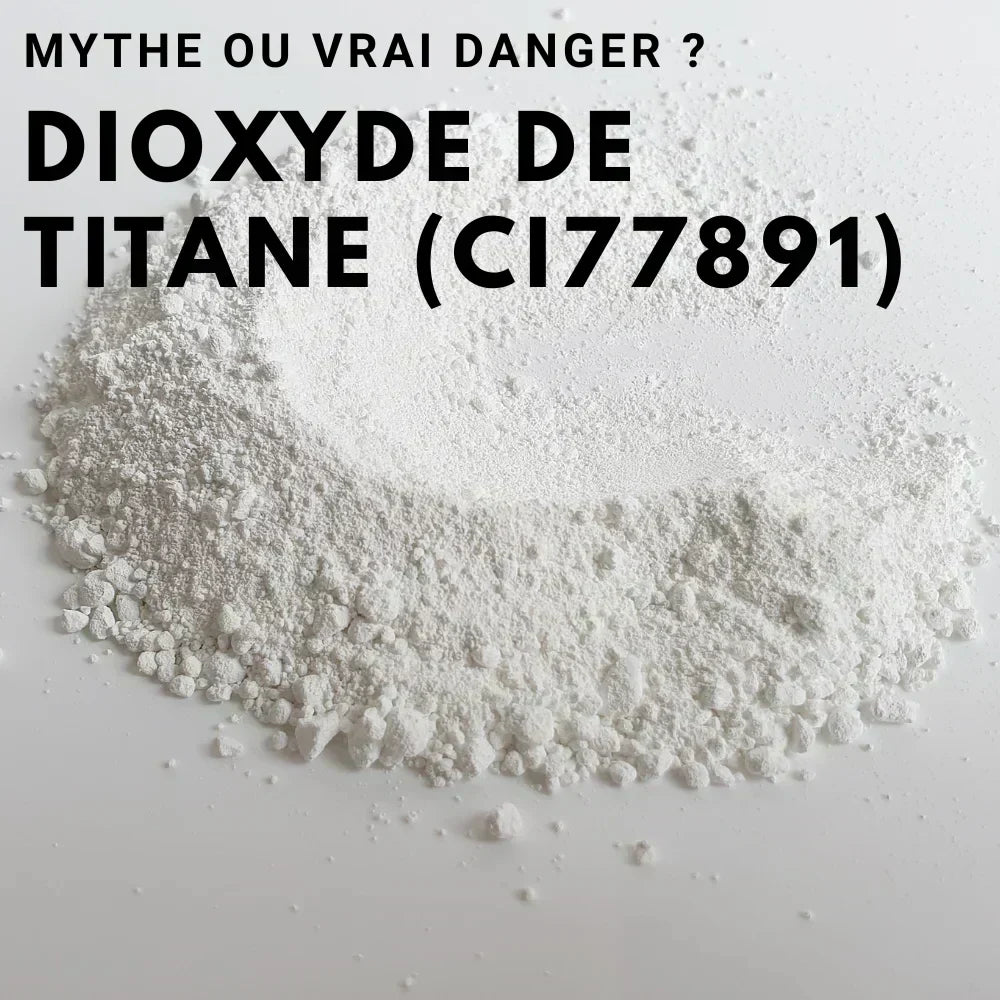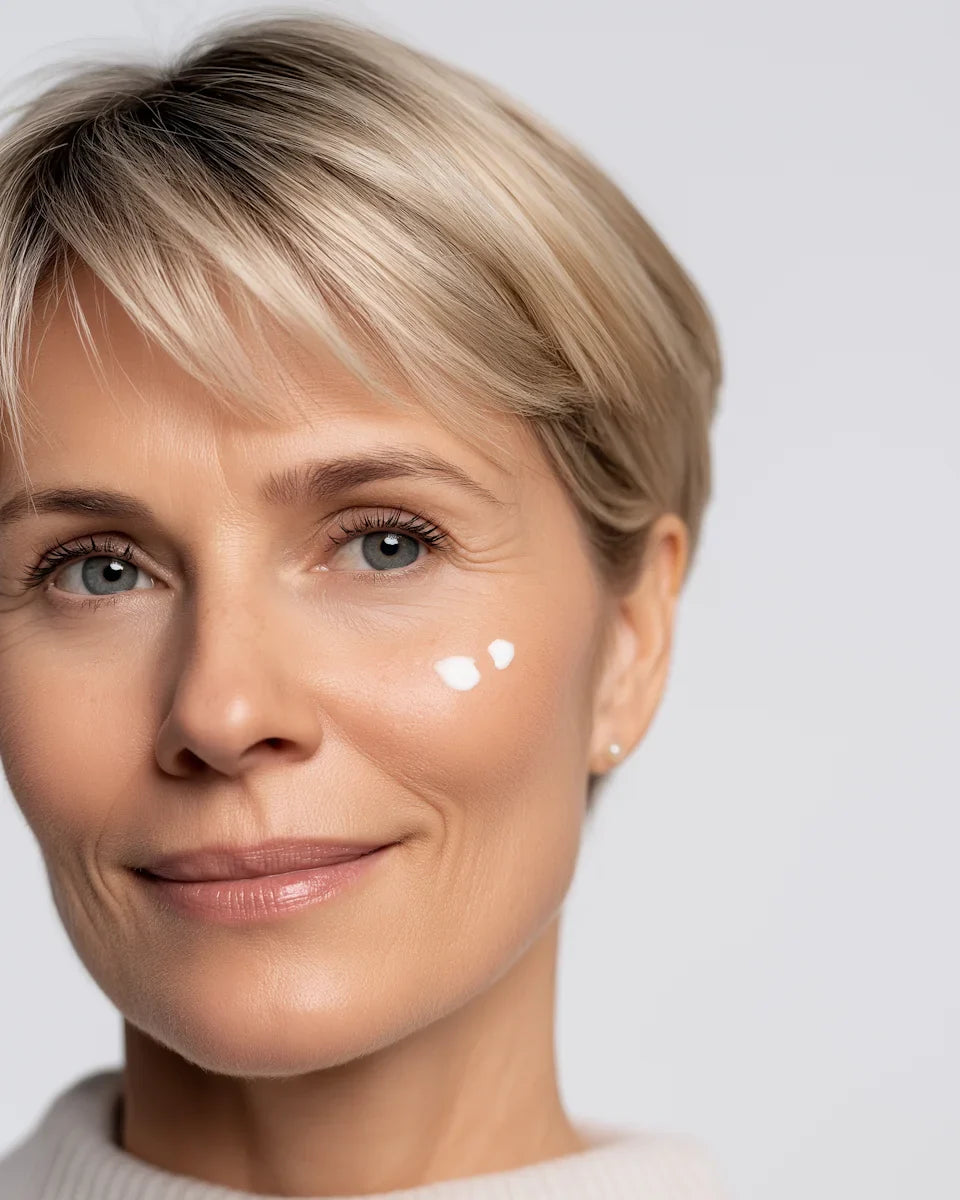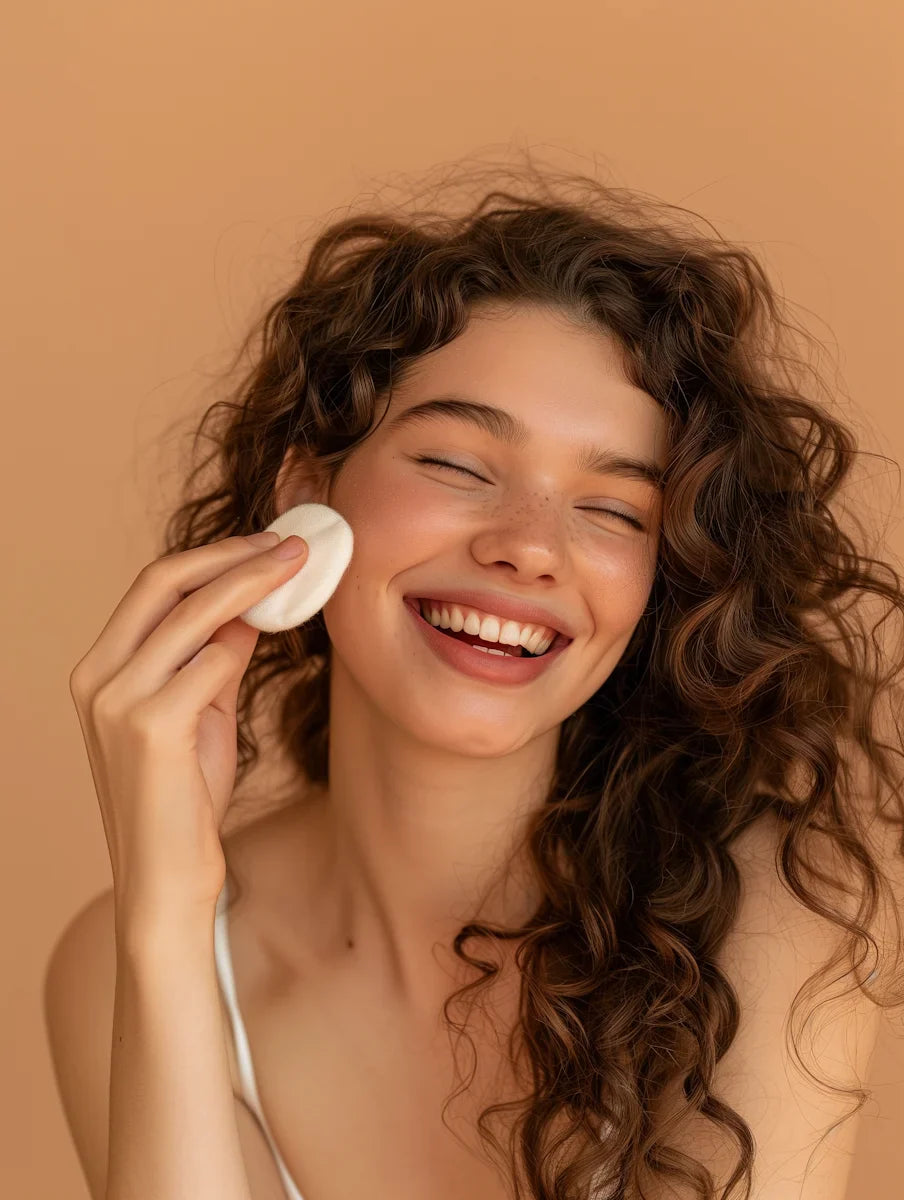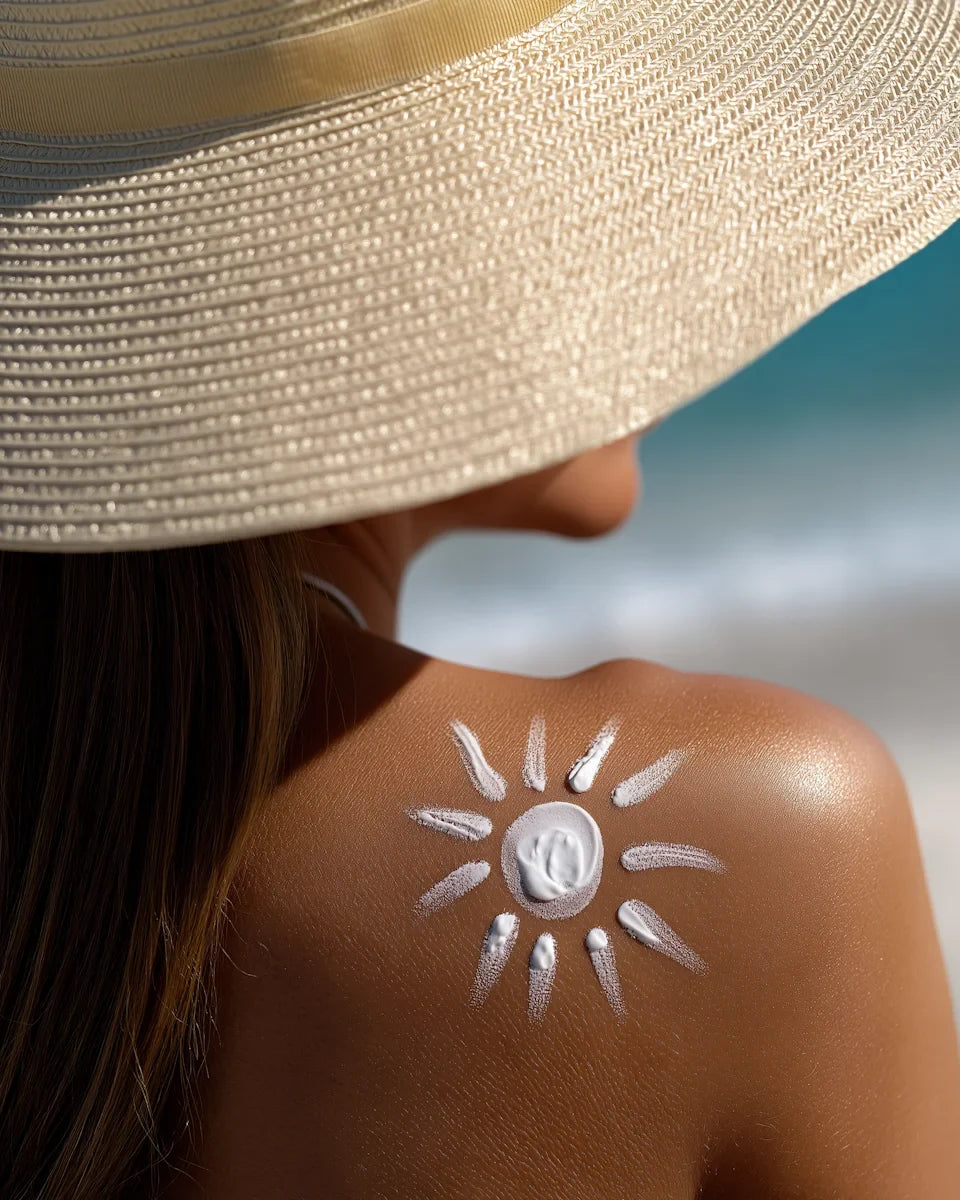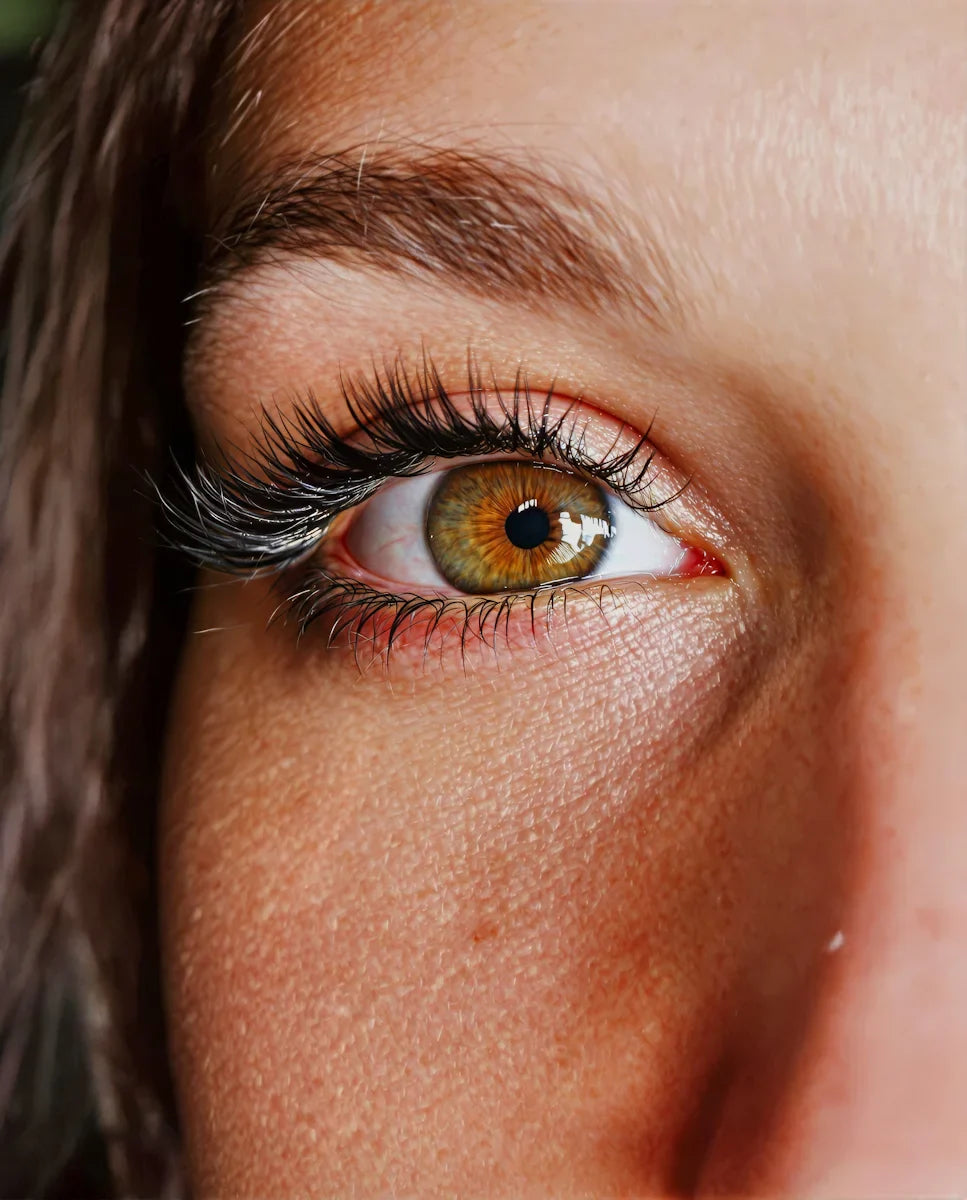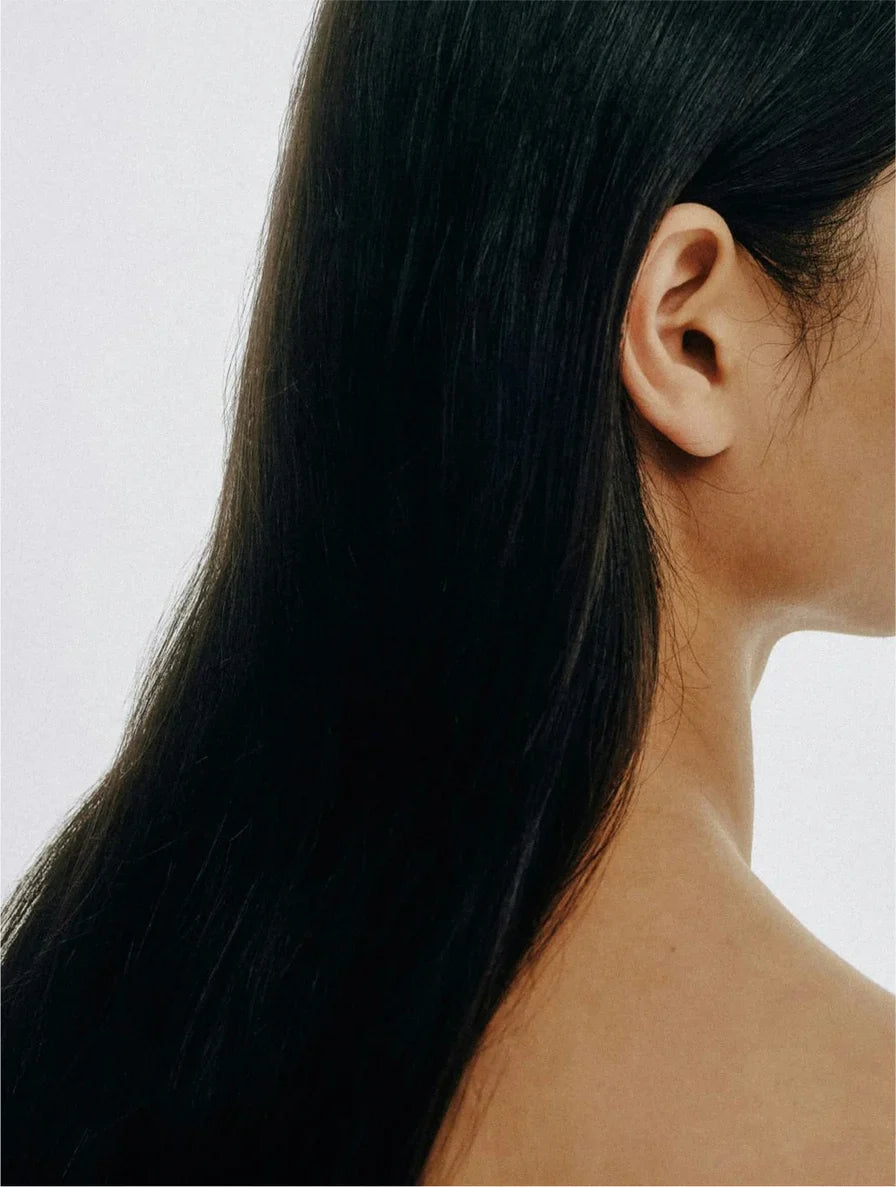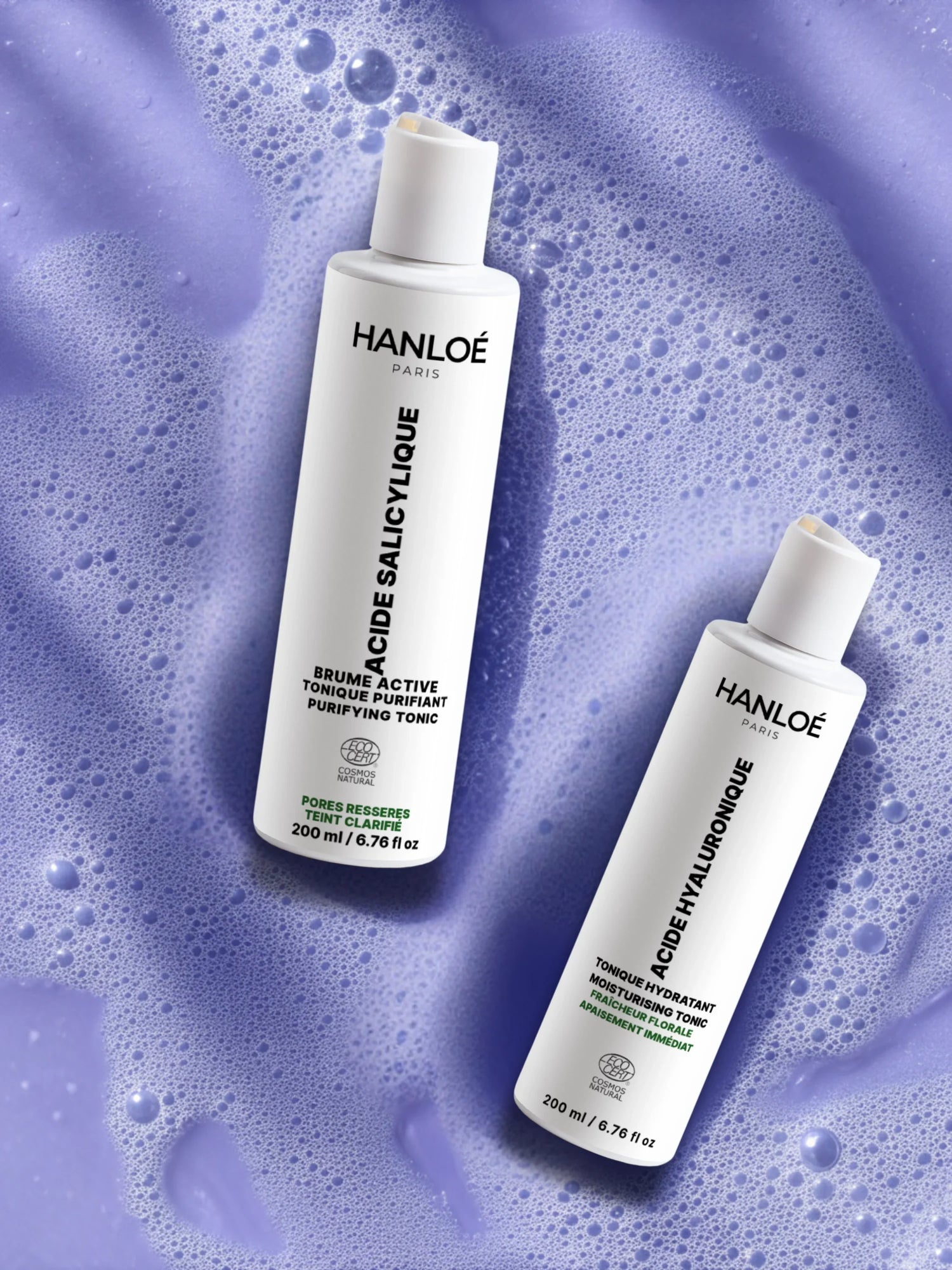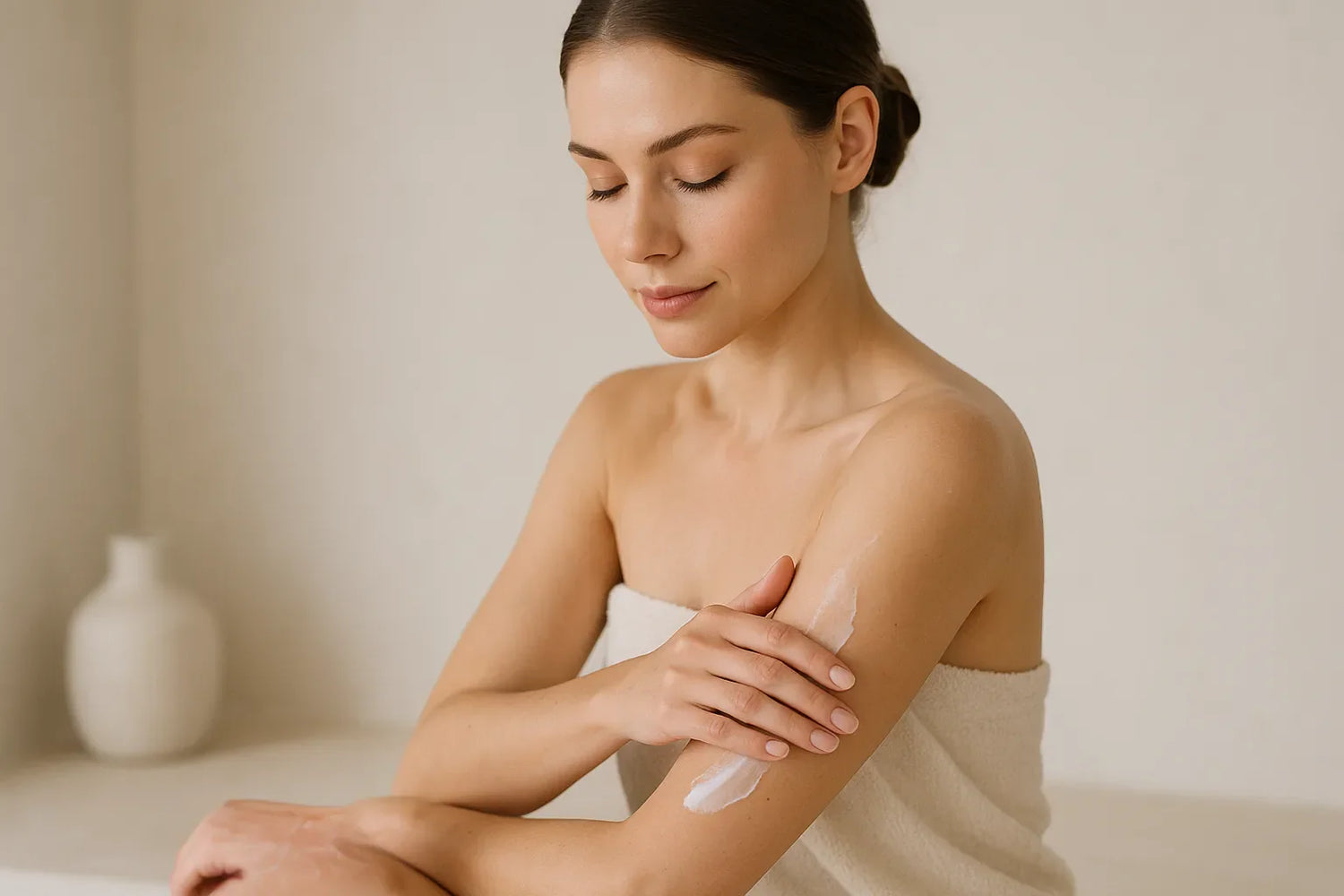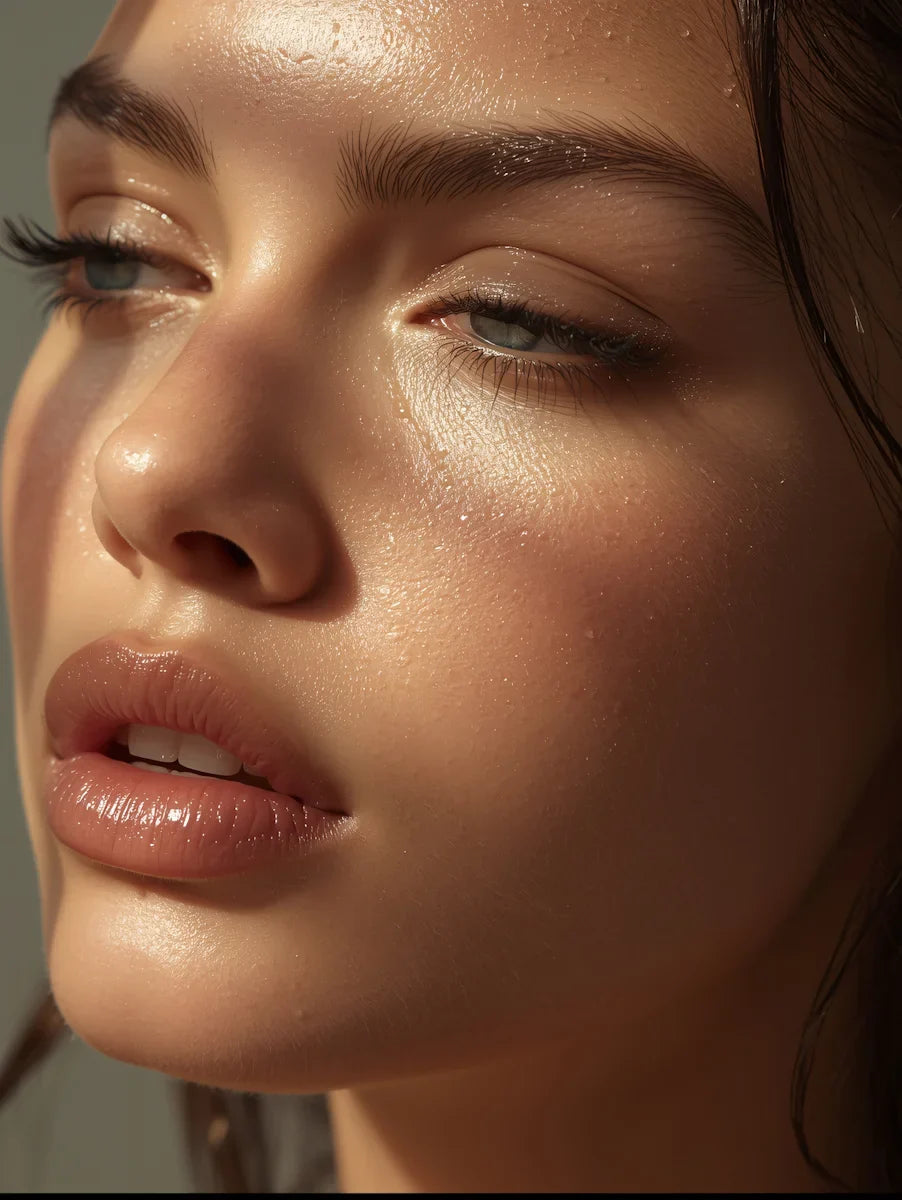Titanium Dioxide: Myth or Real Danger?
Titanium dioxide (CI 77891): myth, risks and realities in cosmetics
Clarity, science, and transparency: everything you need to know to make confident decisions—without alarmism.

Titanium dioxide is a widely used mineral, used for decades in cosmetics for its whiteness, coverage, and contribution to sun protection . Between preconceived notions and unfounded fears, here is a clear and honest explanation.
1. What is titanium dioxide?
Titanium dioxide (CI 77891) is an inorganic mineral that reflects and diffuses light. In cosmetics, it is used:
- as a white pigment for opacity and uniformity;
- as a physical filter participating in the reflection of UV according to the formula.

2. Where is the debate?
What we recognize in him
- Evens out the light and tint of formulas.
- Contributes to photoprotection when integrated into a filtering system.
- Alternative often well tolerated by sensitive skin.
What is being debated
- Confusion between food use and cosmetic use .
- Questions about nanoparticles according to the route of exposure.
- Inhalation : risk concerned by powders, not by creams/emulsions.
The Hanloé point. Distinguishing rumor from regulated reality. Our formulas scrupulously comply with European standards, with strict requirements for material quality and skin tolerance.
Transparency & education — our ongoing commitments.3. The framework of use in cosmetics
In cosmetics, titanium dioxide is used within the limits and conditions set by regulations (product category, concentration, labeling, route of exposure). The requirements include:
- the quality of the grade (purity, coating, particle profile);
- safety of use according to the route of exposure;
- the toxicological evaluation of the finished product.
Note: Status and restrictions may vary by country and category (food ≠ cosmetic).
4. Our position & wording
Quality controlled
We select highly controlled grades, suitable for cosmetic use and skin tolerance.
Aesthetics & comfort
Optimized dispersion to limit the white effect and guarantee fine, elegant and superimposable textures.
Transparency
Clear labeling (CI 77891) and education for informed purchasing decisions.
Continuous improvement
Regulatory monitoring and testing of mineral alternatives while respecting our requirement for efficiency and safety.
5. Advice on responsible use
- Choose according to your skin : for sensitive skin, choose gentle bases and fine textures.
- Finish : on matte/dark skin, prefer advanced dispersions or tinted versions.
- Sunscreens : Reapply in case of prolonged direct exposure.
6. Alternatives & transparency
Combinations with other minerals/pigments can be chosen depending on the objective (comfort, rendering, tolerance). The main thing: overall performance of the finished product, safety and compliance .
FAQ — Your Frequently Asked Questions
Is titanium dioxide dangerous in cosmetics?
When used in a regulated setting and depending on the route of cutaneous application, it has a favorable safety profile . Inhalation concerns relate to powders , not creams.
Why do some formulas whiten?
The pigment strongly reflects light. Optimized dispersion and modern textures reduce this effect.
Do you use “nano” grades?
We favor grades strictly adapted to the intended cosmetic use and compliant with the European framework.
Enlightened protection, assumed beauty
Discover our mineral treatments combining effectiveness , tolerance and sensory elegance .
Discover our sunglasses Contact an expert
